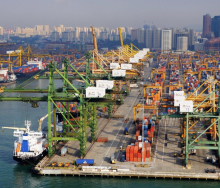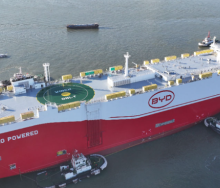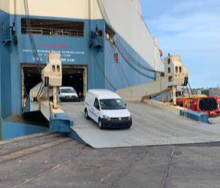APM Terminals has developed advanced software, which uses Artificial Intelligence, to accurately predict weather events and help terminals prepare as efficiently as possible. In 2021, the software reduced container toppling incidents at its terminal in Tangier to zero.
The severity of an event in 2020 convinced the terminal leadership team that more had to be done to protect both people and operations - not just in Tangier, but across APM Terminals, where containers were being blown over with increasing frequency.
Ahmed El Amrani, HSSE manager at APM Terminals MedPort Tangier, said they had been moving up to 800 containers every time the forecast said to expect gales. A huge and costly effort with limited effect. “The weather forecast was too unreliable, so we kept scrambling at the wrong times, or were taken by surprise. We needed better data to make the right moves at the right time.”
The terminal pulled in experts on meteorology, aerodynamics, integrated IT solutions, and experienced terminal operators to work on the problem. Over six months the task force developed and tested a highly advanced piece of software, which uses 18 on-site sensors to build a highly detailed wind forecast and predict exactly which containers are at risk at any given time. It presents the data in a simple and intuitive dashboard.
The resulting Wind Resilience Tool is powered by a smart AI engine which provides much more accurate predictions of wind speed and direction at the terminal and automatically alerts users when pre-set wind speed criteria are forecast to be exceeded.
“The tool pulls the weight, size and position of each container from the terminal operating system and builds a live 3D model of the yard, updated in real-time with each container movement," said El Amrani.
“Machine learning or ‘artificial intelligence’ also identifies when the actual weather does not match the forecast, and the system learns from this and improves the forecasting.”
The system went live at the MedPort Tangier terminal in July 2021, and since then not a single container has been toppled, even though wind speeds have exceeded 25 m/s on several occasions. And the terminal now only needs to move about 20 containers for each wind warning, down from 800.













